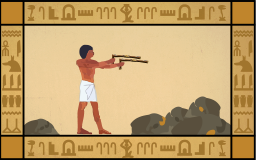Guide/Dowsing
| Metal/Ore Type | Unrecognized At | Recognized At | Vein Shape | Other Metals Nearby |
| Copper | N/A | 0 | Line approx 10 co-ords wide, blob approx 10 coords | Tin, Zinc, Iron, Platinum |
| Iron | 1 | 2 | Line or blob. The blobs have copper veins going out from them | Copper, Tin, Platinum |
| Tin | 2 | 4 | Blob on copper | Copper |
| Zinc | 3 | 6 | hexagonal-ish ring | Lead in center of ring |
| Aluminum | 2 | 5 | Spiral veins 1- 2 coords wide emanating from a central spot, interspersed with Magnesium along the same vein. Veins end in Aluminum blobs | Magnesium |
| Lead | 3 | 7 | blob in the center of Zinc ring | Zinc |
| Cobalt | 5 | 10 | Spiral vein, the vein is 5-10 coords wide, with about 15-20 coords blank between arms, the spiral is at least 100 coord large | Center of the spiral : Antinomy |
| Antimony | 6 | 13 | small blob in the center of Cobalt Spiral | Cobalt |
| Magnesium | 8 | 16 | A vein 1-2 coords wide connected to aluminum | Aluminum |
| Silver | 7 | 15 | Spiraling vein a few coords wide | Gold? |
| Platinum | 12 | 24 | Blob approx 15 coords wide between iron+iron, iron+copper | Iron, Copper |
| Gold | 11 | 22 | Blob approx 15 coords wide on one end of Silver vein | Silver |
| Nickel | 17 | 35 | Blob approx 30 coords wide |
Ore Shapes
- Copper - Curved 10 coords wide not always capped with another ore, but frequently tin. Blob about 10 coords diameter.
- Tin - Cap on copper blob or vein.
- Iron - jagged line, 1 coords wide.
- Zinc - Hexagonal ring (around a central lead blob, T9 diameter 160 units one occurrence)
- Aluminum - Spiral veins 1-2 coords wide, connected to Magnesium
- Lead - Blob in the center of Zinc ring
- Magnesium - Vein 1-2 coords wide connected to Aluminum
- Silver - Long, winding vein 1-2 coords wide, sometimes changes to a blob along the vein
- Platinum - Blob approx 15 coords wide
- Gold - Blob approx 15 coords wide
General
First, you need to assemble a Dowsing Rod.
- It is used to locate veins of metal Ore.
- When carrying one, a Dowsing Icon will allow the checking of the coordinate you are on.
- Dowsing starts a Focus timer.
Tips n Tricks
- Sometimes the absence of an ore is as important as its presence. If you find a gap in a vein of ore, it's quite probable that you have an intersection of rare ore!
- Focus helps you dowse more often
- Constitution helps you detect a larger area
Perception detects the ore type and is the primary stat required. Each ore type requires a different perception level similar to stone quarries.
Each ore type has a different path trajectory (direction like curved, straight) and width (number of coordinates).
If the width of the ore path is narrow (e.g. 1 coord wide) then you have to be standing directly on top of it to detect it. Adding +CON allows you to detect a vein when you are near but not on top of it.
- With base of 0 CON you get a message similar to: You detect nothing under your feet.
- With ++CON you get a message similar to: You detect a vein of ore nearby.
In different tales, the distance between mines can be a significant difference between having multiple mines share the same ore field. Consider the placement of the mine carefully. Buildings and stone quarries and vineyards can impact the placement of a mine.
- An indirect consideration is the distance to smelters and furnaces. Many guilds and players setup Public Mines and Smelters and upgrade them as advanced technologies are opened. Especially in Early Telling, these facilities are expensive to make and it is a great benefit to all players.
